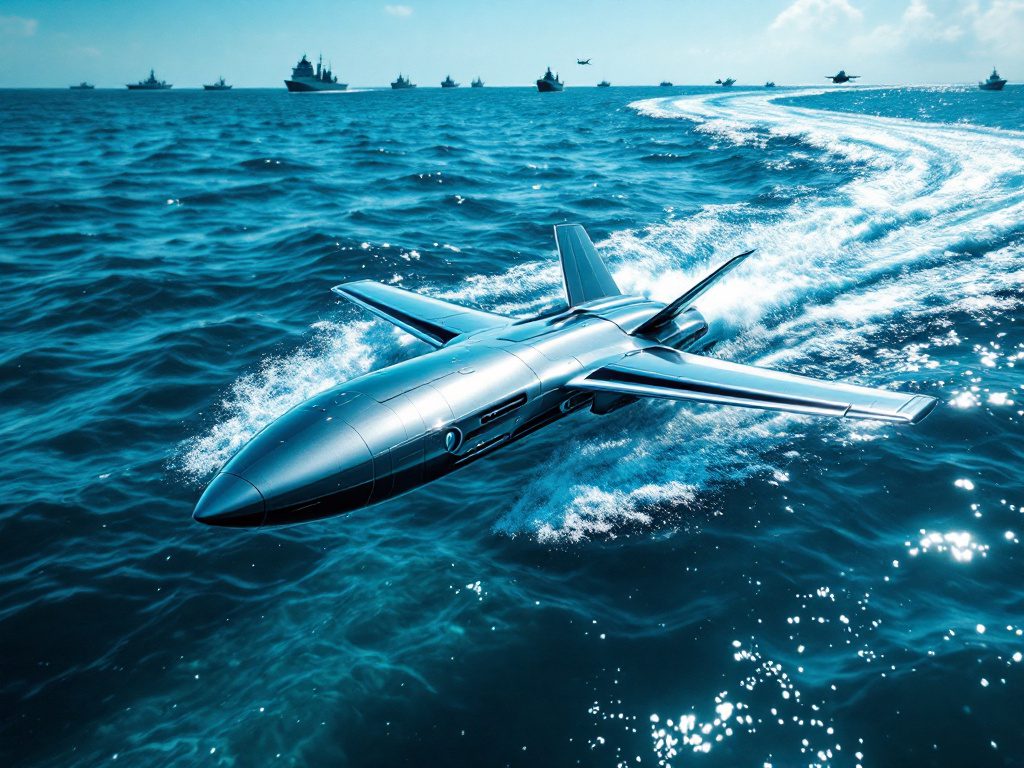The Dawn of a New Era in Drone Warfare
Ukrainian ingenuity has once again reshaped the battlefield. For the first time in history, a naval drone has taken down a combat aircraft. On May 2, 2025, as dusk settled over the Black Sea, Ukrainian operatives from the elite Group 13 unit orchestrated a stunning strike near the Russian port of Novorossiysk. Their weapon of choice? The MAGURA V5, a sleek, torpedo-shaped drone designed not just to threaten ships, but now, shockingly, to challenge the very concept of air superiority.
Reports first surfaced via Russian Telegram channels, an ironic twist for Kremlin censors desperately seeking to control the digital narrative. The Su-30 fighter, reportedly worth $50 million, erupted into flames and plummeted into the sea’s dark depths. This wasn’t the first time Russian defenses were humiliated by Ukraine’s burgeoning drone program, but never before had a naval drone brought down a plane mid-flight, marking a staggering milestone in modern conflict.
The MAGURA V5 wasn’t conjured overnight. Developed by Ukrainian state-owned SpetsTechnoExport and unveiled at Turkey’s IDEF 2023 arms show, this drone has proven itself a pivotal player in the Black Sea chess match. In February 2024, a swarm of these vessels reportedly sank the Russian landing ship ‘Tsezar Kunikov’ and the missile boat ‘Ivanovets,’ inflicting losses estimated at $500 million on the Russian Black Sea Fleet, according to Ukrainian intelligence chief Kyrylo Budanov. Now, their adaptability is on global display—platform upgrades reportedly allow them to carry everything from warheads to air-to-air missiles.
Disrupting the Traditional Balance of Power
The strike near Novorossiysk wasn’t an isolated flashpoint. It signals an emergent doctrine—autonomous systems are fundamentally redefining what’s possible in warfare. In this engagement, a remotely operated sea drone pierced both the physical and psychological barriers traditionally protecting the Russian military. What does it mean when the expensive, human-piloted symbols of power can be neutralized by smaller, relatively inexpensive robots guided by a handful of determined operators?
The repercussions cut far deeper than a single downed aircraft. “This operation is historic,” declared a Ukrainian defense official in Kyiv, “not only for Ukraine, but for militaries around the world who must now reconsider their own vulnerabilities.” Even experts in the West sounded the alarm. “The democratization of drone warfare means anyone with technical ingenuity and sufficient motivation can shape the battlefield,” noted Dr. Michael Horowitz, a Pentagon drone analyst, speaking at an Atlantic Council panel. In other words, the monopoly on devastating military power is slipping away from the world’s largest militaries.
Russia’s response was characteristically blustering. Moscow claimed, seemingly in panic, that over 170 Ukrainian drones had attempted strikes across Crimea and the Black Sea during the same period, prompting a state of emergency in Krasnodar Krai. Four civilians were reportedly injured, grain terminals were damaged, and homes suffered under the low-tech but persistent menace of Ukrainian ingenuity. Still, the symbolic victory of the Su-30 strike loomed large, highlighting both the efficacy and the adaptability of Ukraine’s drone program.
The Wider Implications—And the Growing Cost of Stagnation
Beyond that, the Magura V5’s success is not just a Ukrainian story—it is a wake-up call for complacent defense orthodoxy globally. It’s a lesson in what happens when entrenched, bureaucratic military powers ignore the warning signs of technological disruption. American military historians may recall how the dreadnought battleship once seemed invincible—until aircraft carriers changed the calculus in the Pacific. Now, naval and air supremacy face similar inflection points.
The real price of failing to adapt is measured not only in destroyed hardware, but in human lives and collective security. According to a recent Pew Research study, NATO member states are increasingly alarmed by the rapid spread of autonomous military systems, fearing gaps in their own defenses and new threats for civilian shipping and infrastructure. Yet, progressive societies have always understood that adaptability, transparency, and innovation are their most powerful defenses.
Ukraine’s approach—melding open collaboration between intelligence, military, and technical sectors—has yielded world-first breakthroughs. Contrast this to Russia, where rigid hierarchy stifles field-level innovation and where losses are buried both literally and figuratively, as suggested by the ongoing concealment of Black Sea fleet destruction near Novorossiysk. There’s a reason autocracies lag in responsive innovation: fear and suppression are no match for ingenuity, solidarity, and the urgent hope for freedom.
“The monopoly on devastating military power is slipping away from the world’s largest militaries.”
For progressives, this moment is not just about outmaneuvering an invader—it’s about building societies resilient against authoritarian aggression, where technology serves liberation, not subjugation. The significance of a Ukrainian sea drone bringing down a Russian jet is a shot across the bow of ossified military thinking and a rallying cry for democratic nations to invest in flexible, life-preserving technologies that protect liberty and peace.

